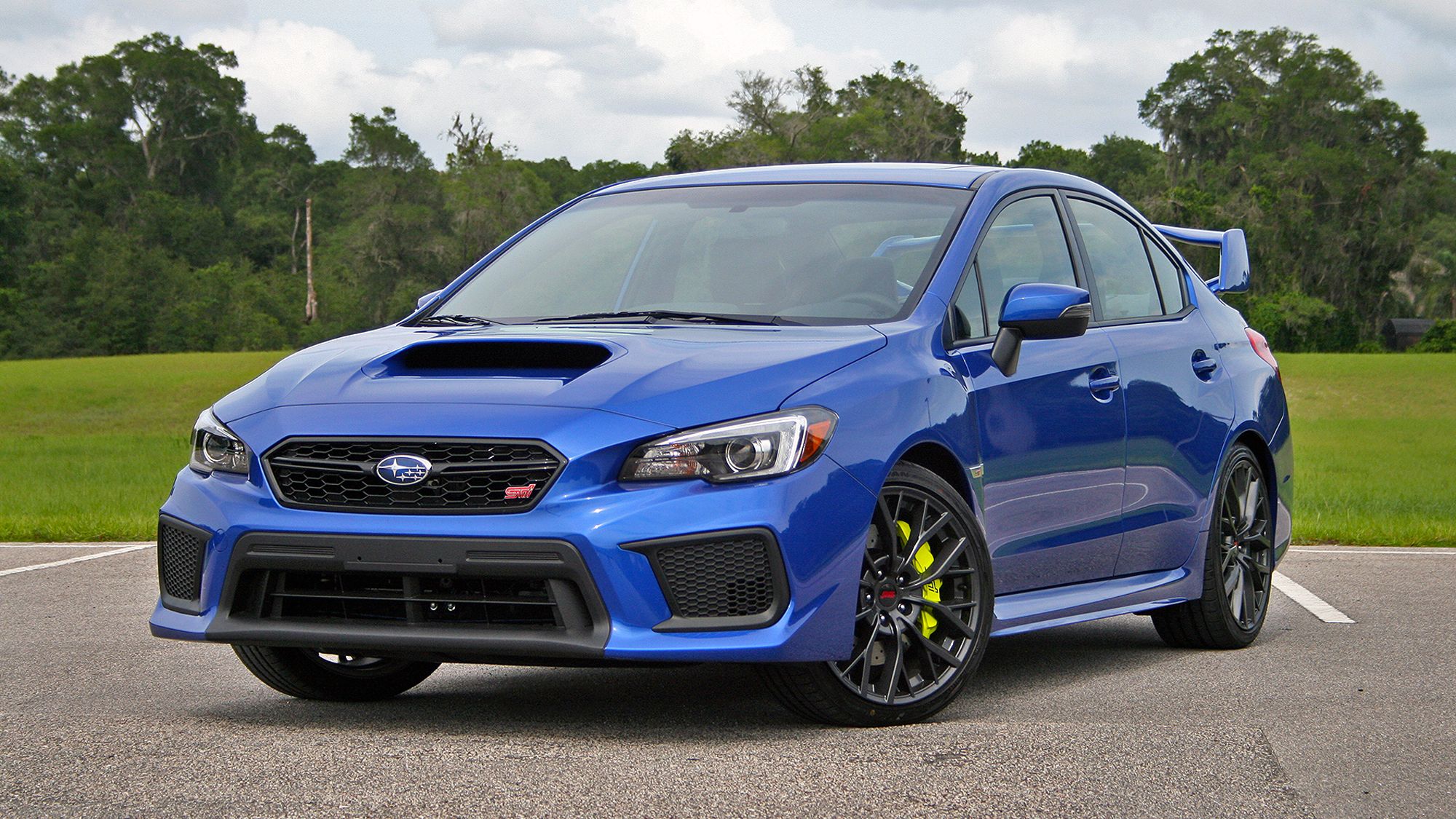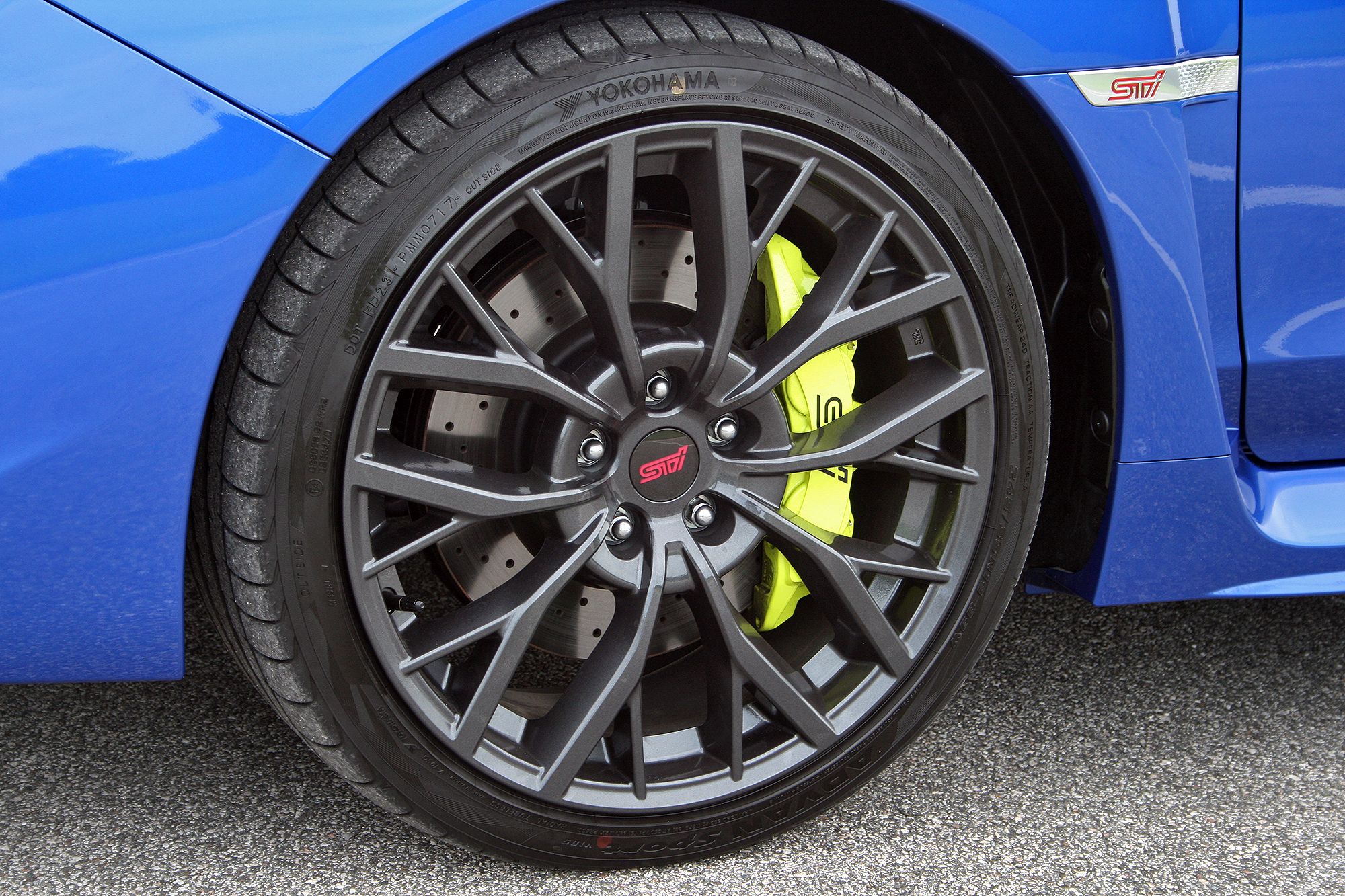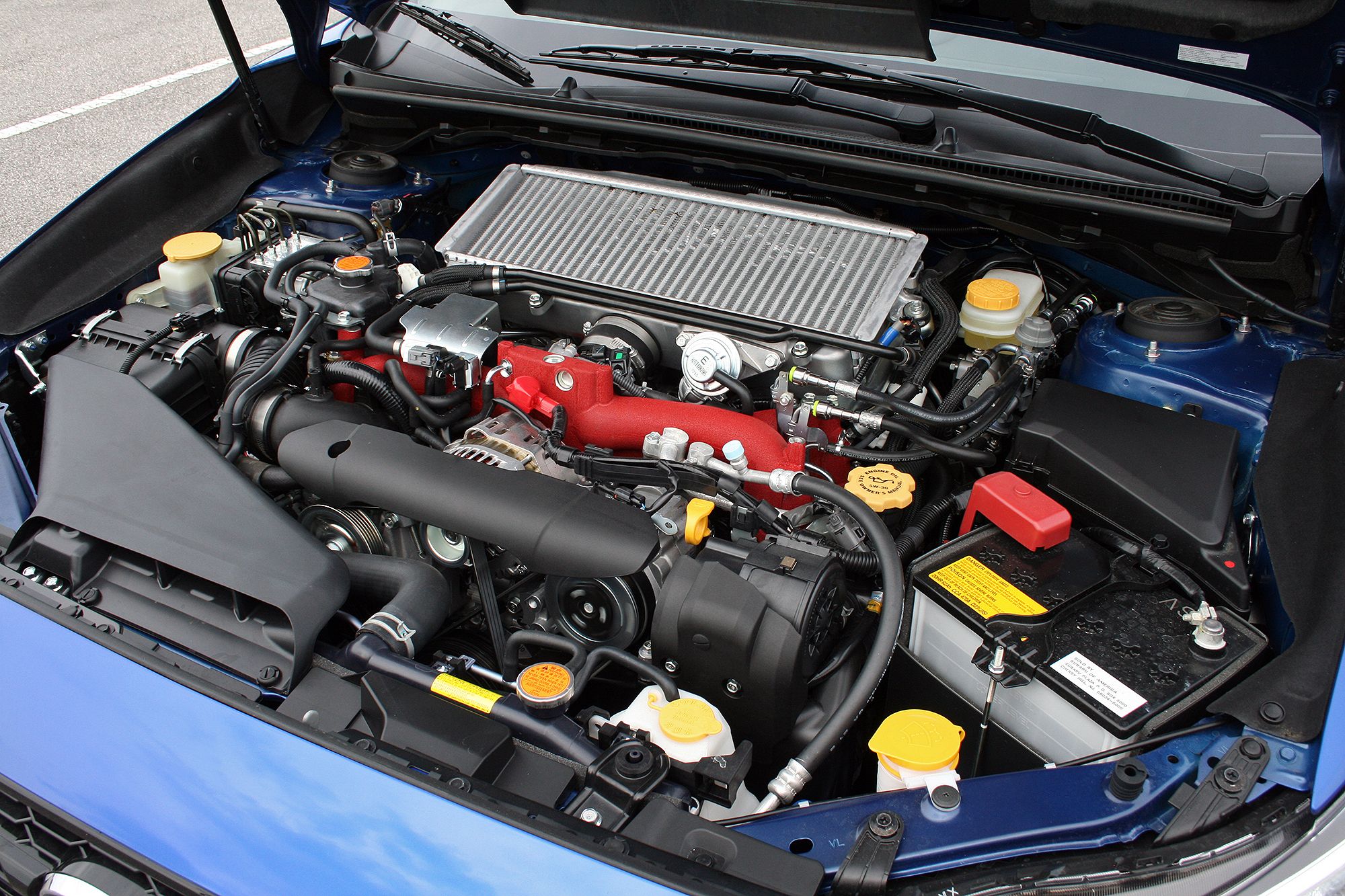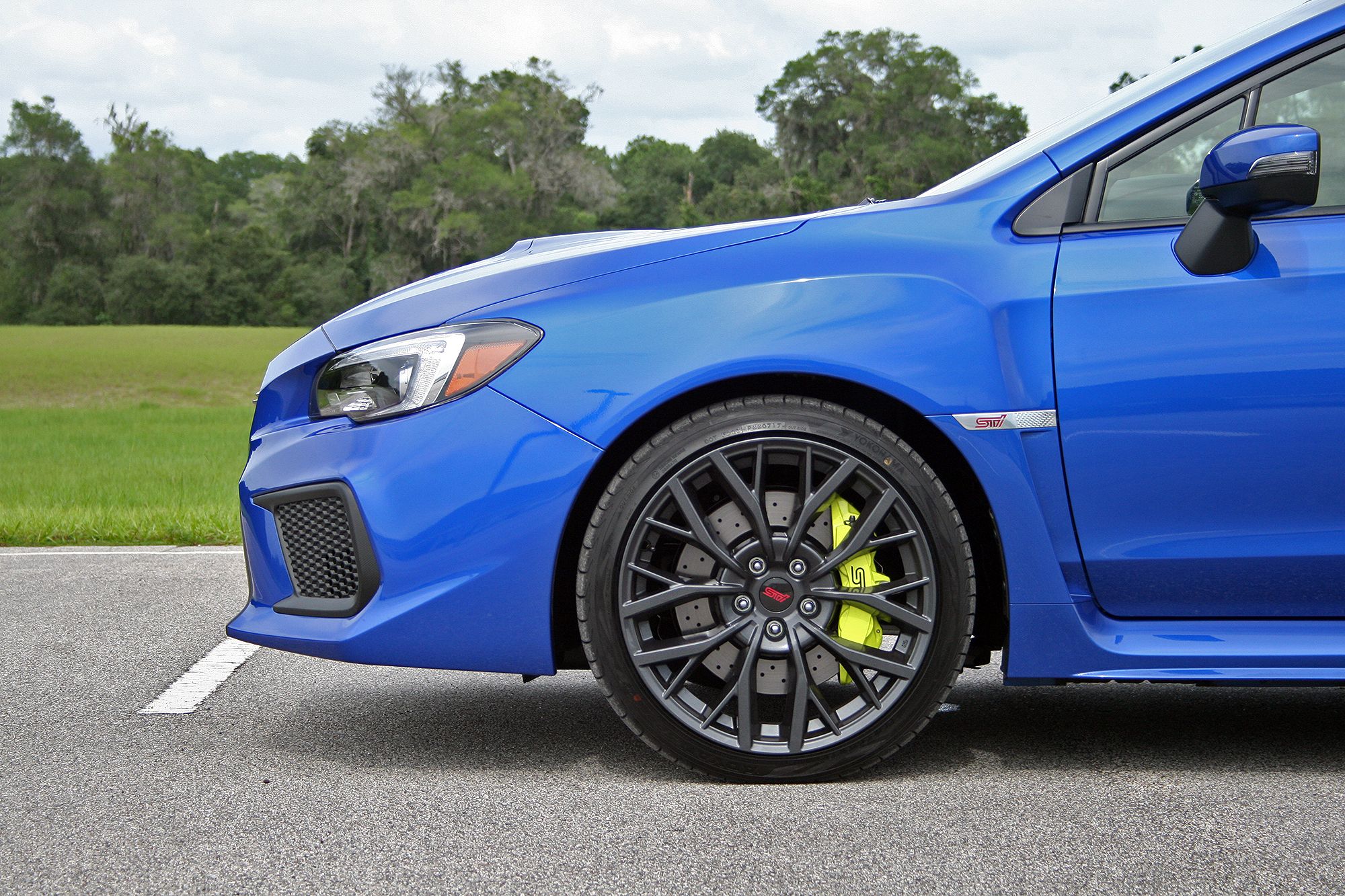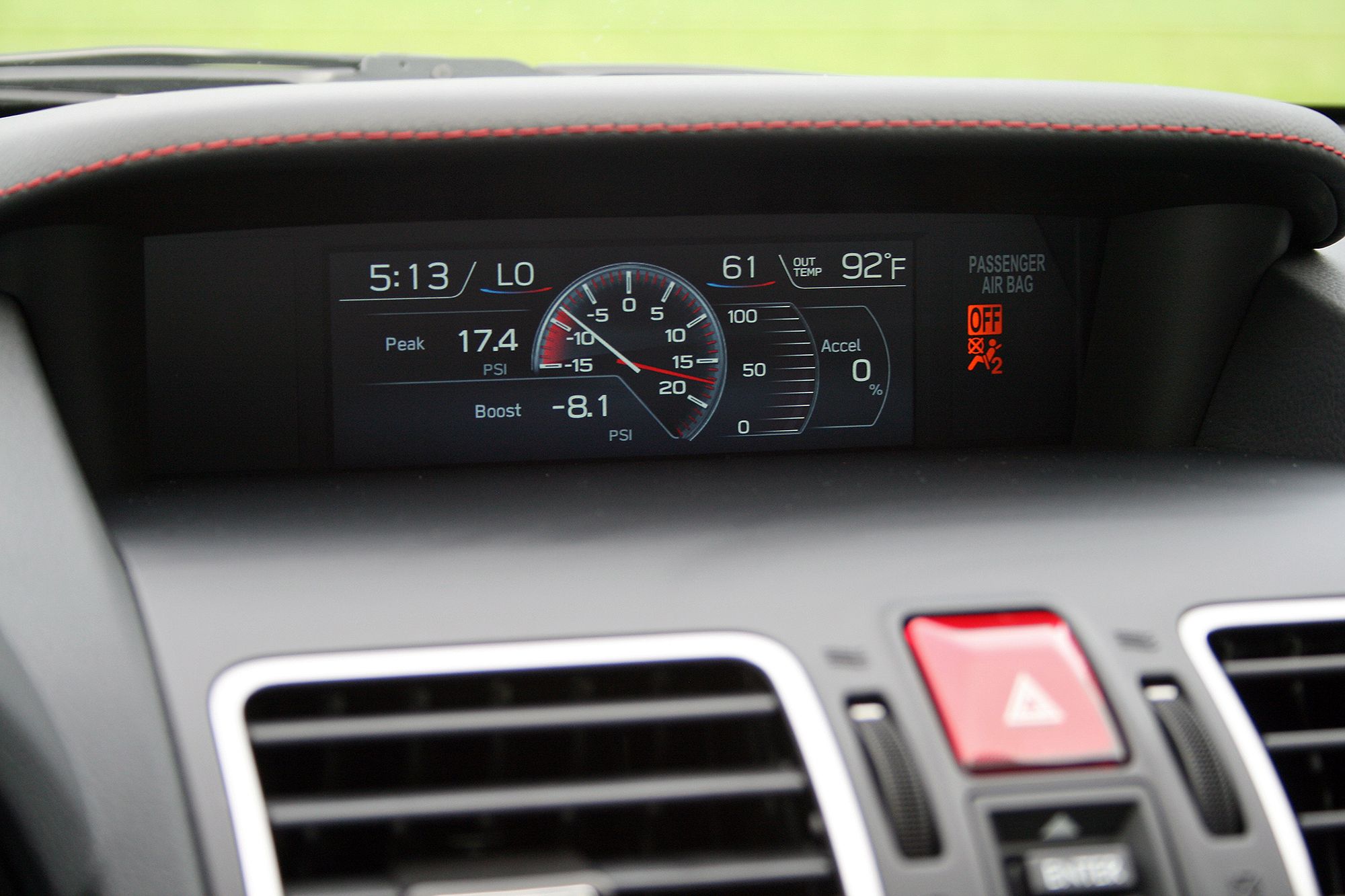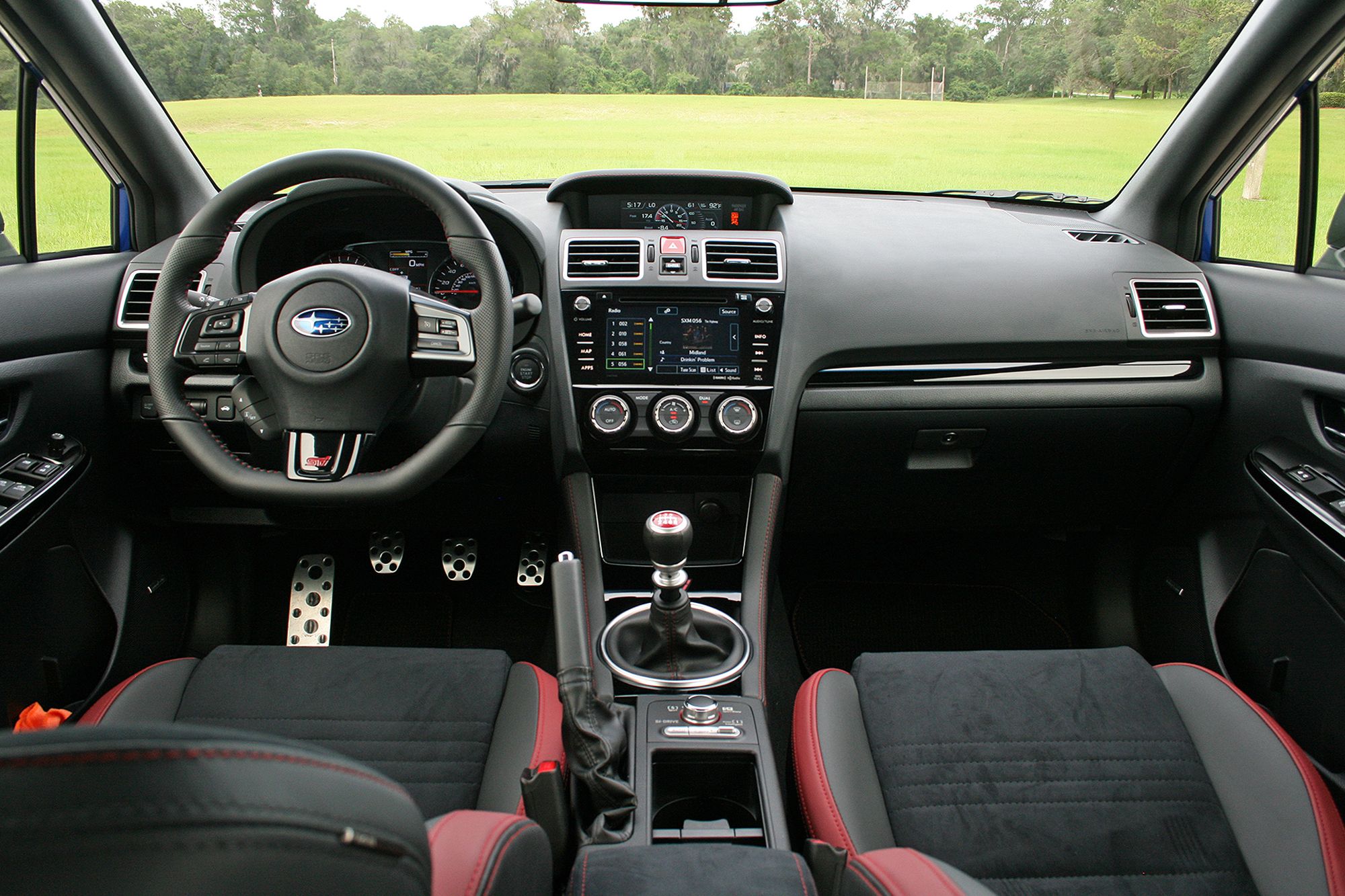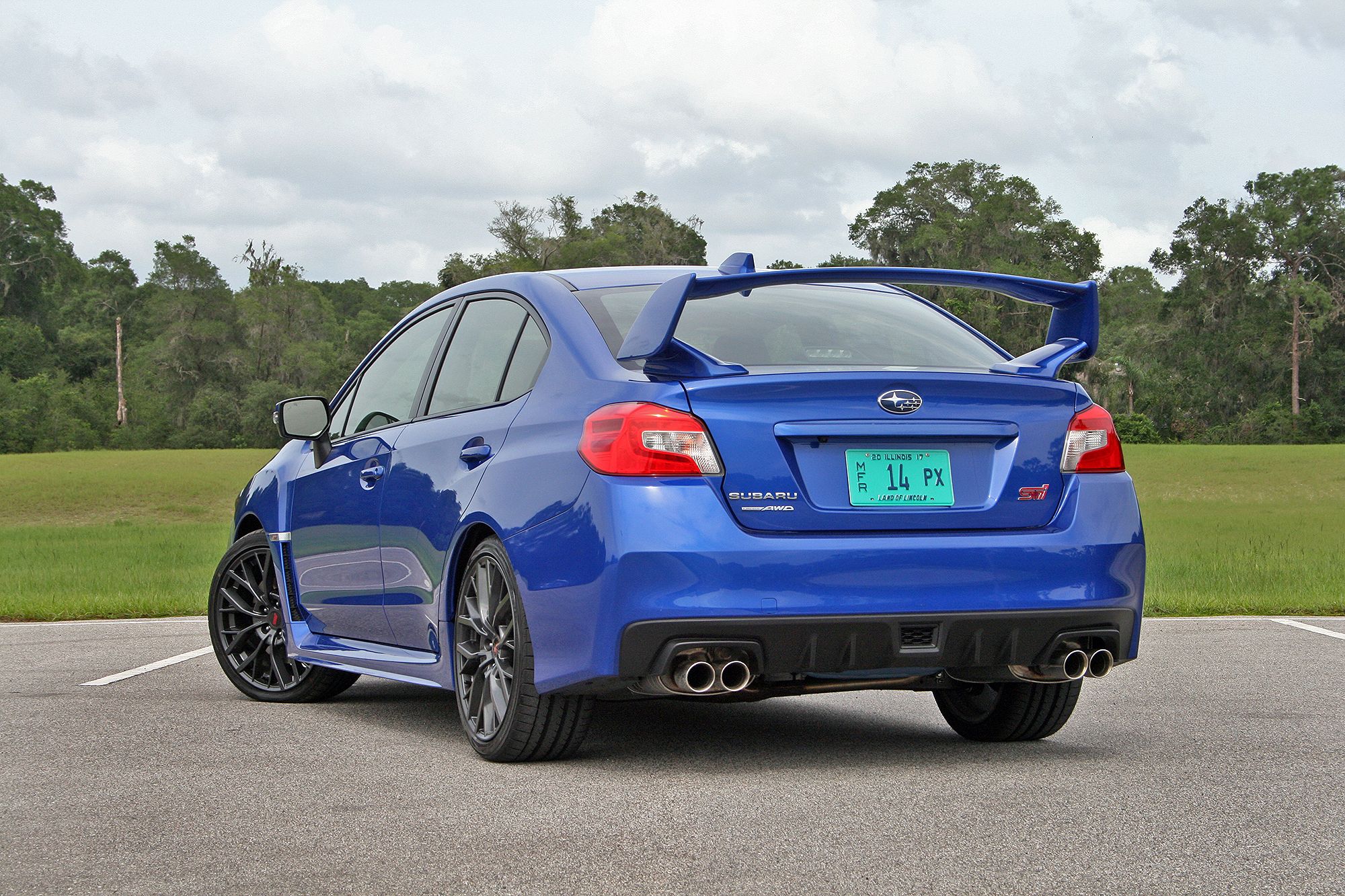Subaru has given the WRX STI a mild refresh for 2018 – with a strong emphasis on mild. The press materials contain bullet points like, “optimized suspension, revised styling, and bigger brakes.” But how do these changes actually affect the car? Well, after spending a week with the latest STI, I’m separating the wheat from the chaff. Which of these updates should Subi fans be happy about and which don’t really matter?
I’ve already given a full account of these updates, along with my thoughts behind the wheel, in my Driven Review. But for the sake of time, here’s a quick run-down on what’s new for 2018. The front fascia is new, with a slightly larger lower grille and more pronounced faux air intakes to either side. The fog lights are gone, sadly, but Subaru added adaptive headlights that turn with the steering wheel. The main grille is new, too. Larger, 19-inch wheels are now standard, as are bigger Brembo brakes. Subaru updated the suspension for “better handling and ride comfort.” There’s also a new, fully electric center differential that’s said to more quickly distribute torque between the front and rear axles. Interior mods include a larger vehicle information screen in the center dash and better sound insulation for a quieter ride.
Continue reading for more.
High: Upgraded Brakes
The Subaru WRX STI goes yet another year without any drivetrain performance updates. That means the 2.5-liter Boxer turbocharged four-cylinder still makes 305 horsepower and 290 pound-feet of torque, just as it has since 2008. Thankfully, Subaru decided the STI’s brakes could use more resistance to fade and more pad-to-rotor surface area for overall better braking.
The upgrade comes courtesy of Brembo, with six-piston, monoblock calipers up front and two-piston calipers in the rear. Upgraded brake pads squeeze new rotors, which are both larger and drilled for better temperature control. I don’t have definitive and objective test numbers that show an improvement in braking performance, but I can say the 2018 WRX STI’s brakes stop with authority while not feeling overly grabby around town. Credit Brembo and its leadership among brake suppliers for that. What’s more, Subaru paints the brake calipers a bright hue of acid green. Not only does this help distinguish the 2018 model from those before it, the brakes help spice up the STI’s racer image.
Low: New Front Fascia
Speaking of spice, the WRX STI’s new front end is lacking any of it The changes from the 2015-2017 model are relatively minor, not considering the missing fog lights and relocated turn signals. Side by side, the 2018 car looks plane. Sure, the lower center grille is larger than before, and the side “intake grilles” are reworked, but the result is a more boring look. Sure, it’s clean, but the WRX STI’s design isn’t supposed to be clean, it’s supposed to be aggressive and functional. This car begs for huge driving lights and a factory-installed tow point. Subaru could do so much more here.
That aside, the main grille is better integrated into the fascia, with its lines now running into the headlights. The new mesh also makes the Subaru and STI logos stand out better. Of course, the rest of the car remains the same, save for those new 19-inch Y-spoke wheels. But more on that below.
High: Electronic DCCD
Subaru is known for having excellent all-wheel drive systems in all their vehicles. Well, except for the BRZ, which is built in partnership with Toyota, and offers tons of rear-wheel drive fun for cheap. But I digress. Ranking above all other Subaru AWD systems is that in the WRX STI. It’s unlike any other of Subaru’s Symmetrical AWD systems due to its rear-wheel bias torque split of 59 percent, limited-slip differentials on both front and rear axles, and the so-called Driver Controlled Center Differential. Well, Subaru has updated the DSSC for 2018 with a fully electronic differential that no longer uses both a computer-controlled coupling and a mechanical coupling to deliver torque to all four wheels.
Now, the center differential is completely controlled electronically – something Subaru says allows the differential to operate more quickly and with a smoother action. The system continues to employ brake-based torque vectoring. Like before, the torque vectoring squeezes the brakes on the inside tires while cornering, therefore diverting engine power to the outside wheels. The double action of braking the inside wheels and powering the outside wheels helps the WRX STI corner much more aggressively.
Honestly, though, it’s hard to objectively rate the new electronic DCCD’s performance over the previous system without a back-to-back comparison. The last WRX STI I drove was a 2015 model yearly two years ago. Still, I have nothing bad to say about the DCCD’s operation. The system simply works quietly in the background to divert power to the proper wheels. There’s no fuss, bangs, or vibration to tattle on its operation. Nevertheless, the AWD system empowers driver confidence regardless of terrain or weather conditions.
Low: 19-inch Wheels
Aside from the new front fascia and acid green Brembos, the 19-inch Y-spoke wheels are the only other visible update. Even still, the wheels are nearly identical to the 18-inch wheels on the 2015-2017 WRX STI. It’s a guess, but Subaru likely upped the wheel size for the sole purpose of fitting over the larger brakes. But while bigger wheels are fashionable these days, bigger isn’t always better. Yes, the larger wheel helps narrow the tire sidewall for better on-road cornering performance. However, rubber band tires aren’t ideal for rally driving. One rock or rut is all it takes to bend a rim.
Now, the aftermarket-loving STI owner might say solving the problem is as easy as bolting on a set of Method 502 Rally wheels, but thanks to the larger brakes, going smaller than a 19-inch wheel might be impossible. Tire size is then limited to wheel well clearances. Tight tolerances give little room to modify. The situation makes me wonder if Brembo couldn’t improve braking performance with a smaller rotor and caliper, allowing for a smaller wheel. That sounds like a forum discussion, for sure.
High: Larger LCD Information Screen
It might be a small jump from 4.3 to 5.9, but that’s a big improvement when it comes to screen sizes. That’s exactly the case with the 2018 WRX STI’s vehicle information screen perched atop the dashboard. What’s more the resolution is better, too. The actual interface is similar to the outgoing screen, but cleaner lines and added content help improve the overall ownership experience.
Like before, the information screen in controlled by the three-way toggle switch just below the hazard lights. Toggling up and down scrolls through the displays and menus, while pressing the switch confirms a selection. The screens include the date and time, fuel economy and driving range information, torque split and vehicle pitch, instantaneous fuel consumption and throttle percentage, and a turbo boost gauge with a larger throttle percentage graph. The screen also hosts HVAC readouts for the dual zones, fan speed, and modes. Deeper still, menu settings allow for customization of light delays, keyless access settings, and other parameters.
High: Upgraded Convenience Items
Along with the larger vehicle information screen, Subaru was kind enough to include some other niceties on the range-topping Limited trim of the 2018 WRX STI. These include automatic windshield wipers, upgraded welcome lighting, and Steering Responsive Headlights with LED low- and high-beams with height adjustment control. Rear passengers will also appreciate the new folding center armrest with twin cup holders. Subaru has also shortened the length of time it takes to remotely open the trunk. The door panels also have redesigned grips, though the look very similar to those before. Still, it’s nice to see these updates.
Best of all, Subaru has made the WRX STI’s cabin a bit quieter. The side windows are thicker than before, while the door gaskets have been revised. The windshield header is now filled with foam, too, in an effort to bring noise levels down. The interior is still loud relative to say, a luxury sedan, but the STI won’t induce a headache after a short road trip. Interestingly, I did find the exhaust to be almost too quiet. It’s missing the pops and burbles found in other performance-oriented turbo four-cylinders. While this will make your neighbors happy, the WRX STI should deliver more of an auditory experience than it does. Subaru does, however, offer an STI Performance Exhaust system. This cat-back exhaust is said to dramatically improve sound quality and volume. The question is, why doesn’t this come standard on Subaru’s halo performance car? Perhaps they know many will happily pay the $1,169 for the added sound.
Conclusion
So, is this mid-cycle update worth trading your 2015-2017 WRX STI, or should Subi fans wait for the next-generation rally racer due for 2020? Well, that’s a tough question. The 2018 WRX STI has some great new qualities and features, but they aren’t groundbreaking. There’s no new engine making Ford Focus RS levels of power, or a crazy new interior with far superior in-dash technologies. This is just a solid mid-cycle update. From my perspective, those wanting to enter the WRX STI game for the first time will be happy with the improvements, while current owners will probably hold out on trading up until the next generation debuts.
What are your thoughts on the 2018 Subaru WRX STI’s changes? Let us know in the comments below. Also, be sure to check out my full review here, complete with video.

